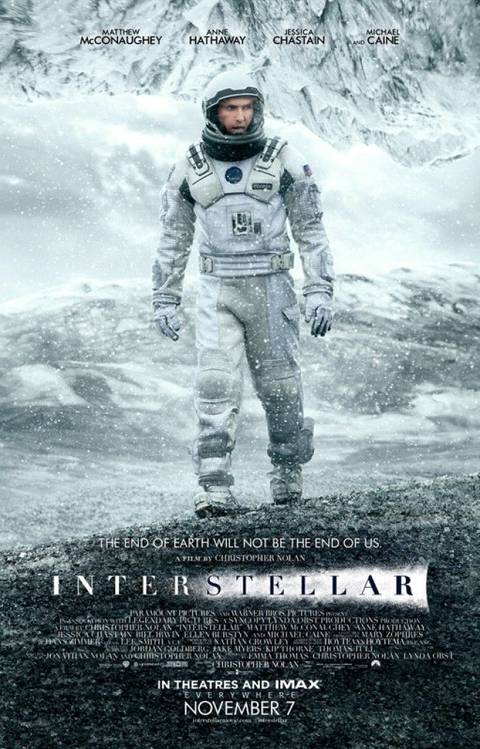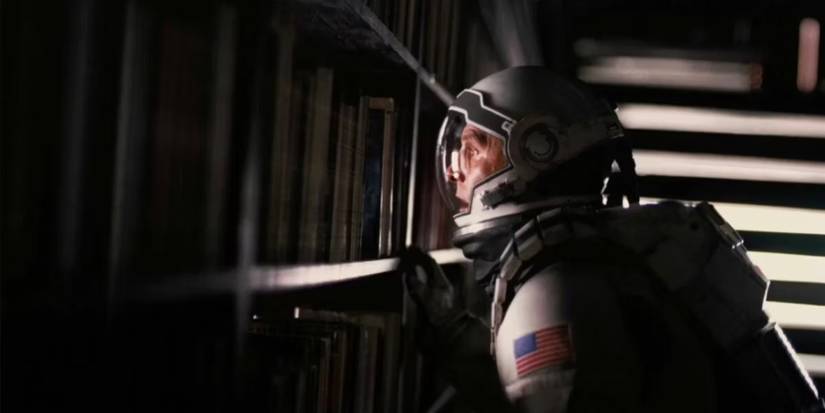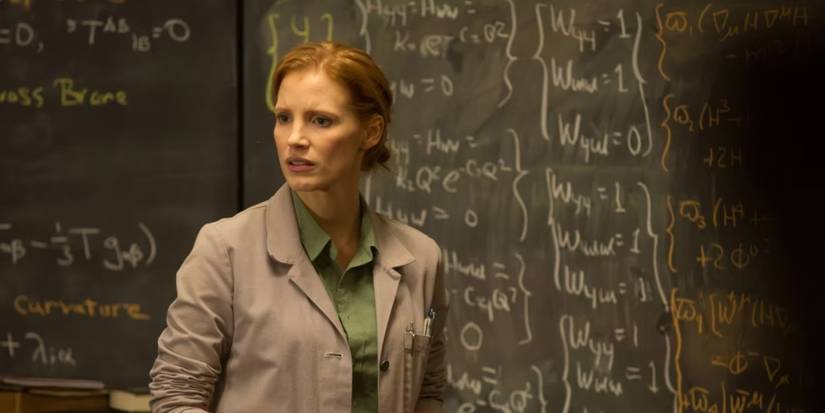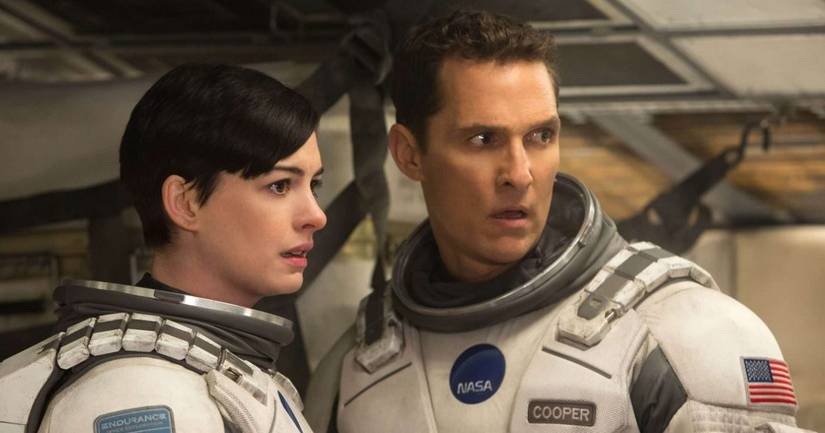It’s been over a decade since Interstellar first hit theaters, and it still feels like a movie from the future. In 2025, it’s not uncommon to see it trending on streaming or sparking new discussions on social media where fans dissect its final act. Christopher Nolan’s space epic has aged into something more than a sci-fi blockbuster. It’s become a testament to cinema’s ability to craft incredible, awe-inspiring, and emotionally jarring masterpieces. Whether you’re revisiting it for the nth time or finally catching up, Interstellar continues to stun, not just with its mind-bending science but with its emotional core.
Set in a near-future where Earth is slowly becoming uninhabitable, the story follows Cooper (Matthew McConaughey), a former NASA pilot turned farmer, who is recruited for a mission to find a new home for humanity. With a team of scientists, he travels through a wormhole in search of habitable planets. He’s left behind his daughter, Murph (Mackenzie Foy, later Jessica Chastain), and a world on the brink of collapse. To tell a story of survival, sacrifice, and the strange elasticity of time, Nolan dives headfirst into theoretical physics, delivering a narrative that is as intimate as it is ambitious.
Upon release, Interstellar was met with awe and debate. Critics showered praise for its visual grandeur, Hans Zimmer’s thunderous score, and the movie’s commitment to scientific accuracy, thanks in part to physicist Kip Thorne’s involvement. Interstellar earned five Academy Award nominations and took home the Oscar for Best Visual Effects. But it’s the film’s final act — the tesseract, the bookshelf, the idea that love might be a dimension — that left audiences divided and intrigued. Even now, there are interpretations about Interstellar’s ending.
So what exactly happens in those final moments of Interstellar? And what does it all mean, scientifically and emotionally? Let’s break it down.
Updated October 28, 2025: If you’re a fan of Interstellar, then you’ll be happy to know Soniya Hinduja has updated this article with additional material.
‘Interstellar’s Ending: What Happened to Cooper and Murph?
In the third act of Interstellar, it’s revealed that the Endurance ship lacks enough fuel to return to Earth and that a black hole poses a significant threat to the team. To save humanity from extinction, Cooper sacrifices himself alongside his robotic companion TARS to shed weight so that his colleague Amelia Brand (Anne Hathaway) can complete the mission on her own to the planet Edmunds. Cooper thus drifts into the black hole and must escape the collapsing ship around him. However, before he can, Cooper enters a “tesseract,” a projection of a human’s life from the fifth dimension, simplified for Cooper’s understanding.
This space is a physical representation of his daughter Murph’s bookshelf, through which he tries to communicate with her as he watches her life unfold from the fifth dimension. Cooper relays important information to Murph (Jessica Chastain), which, in turn, helps her save humanity from extinction. When Cooper is ejected from the tesseract, he is found and returned to a colony of Earth, only to discover that 90 years of Earth-time have passed since he left, though he has barely aged. Cooper reunites with his now-elderly daughter, who tells him to seek out Brand, who may have colonized elsewhere, which is seen to have been a success.
The Big Twist: Who Built the Tesseract in ‘Interstellar’?
Arguably the most unique and outstanding scene, both visually and scientifically, is the sequence inside the tesseract. This fifth-dimension interpretation has been described as scientifically accurate to what could happen if someone entered a black hole, per Gizmodo. It also allows the audience to better understand the concept of space-time.
Throughout the film, the inventors of the tesseract are referred to as “they,” and it’s later revealed that “they” are human descendants who have become fifth-dimensional beings, divorced from the laws of the fourth dimension — one of those laws being time. While it may seem like Cooper wound up in the tesseract at the hands of extraterrestrials, the reality is that future humans sent Cooper through the tesseract to save the human race. These humans built this space so that Cooper would understand what was happening and would convey vital information to Murph through Morse code through her bookshelf.
Murph’s Ghost
The tesseract also raises the question of Nolan’s use of causal loops throughout the film, the sci-fi genre’s favorite plot device. The tesseract scene reveals that Cooper has been Murph’s ghost all along, and therefore, he’s the reason behind his journey through space. Through the tesseract, Cooper can arrange the coordinates to NASA’s secret base in dust from the storm at the beginning of the film. If it weren’t for Murph’s ghost, Cooper would never have known how to get to NASA or been able to join the mission.
How is Cooper able to send himself the coordinates without prior knowledge of the base? Through the causal loop, of course. And it’s not the only causal loop in the film: the future humans from the fifth dimension invented the tesseract so Cooper could send Murph life-saving messages to save the human race. Though confusing, the causal loop allows future humans to effectively save themselves.
What Does ‘Interstellar’s Ending Mean?
While Interstellar‘s ending is mind-blowing and somewhat difficult to understand, what many viewers have wondered is: what exactly does the ending mean? Interstellar not only explores aspects of space and time, as well as the fifth dimension, but also explores the potentially disastrous effects of climate change, which could lead to environmental catastrophe and make the surface of Earth uninhabitable. This underscores the message that climate change is a real problem with potentially catastrophic consequences if left unchecked.
One notable element at the heart of Interstellar is love. While the movie is very interested in an accurate scientific depiction, it also hangs much of its ending on the abstract idea of love. Earlier in the film, Hathaway’s character, Brand, says, “Love is the one thing we’re capable of perceiving that transcends dimensions of time and space,” a sentiment literalized in the film. A father’s and daughter’s love are central to saving humanity. Separated by light-years, their love for one another saves both of them. This is a rather human outlook for a movie that some may see as realistically cold. Love has ripple effects that span time and can alter the course of history.
A Potential ‘Interstellar’ Sequel?
It’s a question that never really goes away: will Interstellar get a sequel? Over the years, rumors have appeared through fan theories, speculative Reddit threads, and wishful headlines. But as of 2025, there’s still no sign of Interstellar 2. Nolan has remained tight-lipped, and true to form, he’s shown little interest in revisiting past worlds unless they are part of a planned trilogy.
But that hasn’t stopped the film from growing in stature. Interstellar‘s 2024 IMAX re-release was a box-office smash. It drew sold-out crowds and reminded everyone just how great Nolan’s vision is. Streaming platforms continue to rotate it into their top sci-fi picks every few months, allowing a fresh wave of viewers to discover the movie for the first time.
So, while there is no sequel in sight, Interstellar has become one of those rare movies that live on through conversation and ambition. Interstellar is available to rent on Apple TV and Prime Video.

- Release Date
-
November 7, 2014
- Runtime
-
169 Minutes




